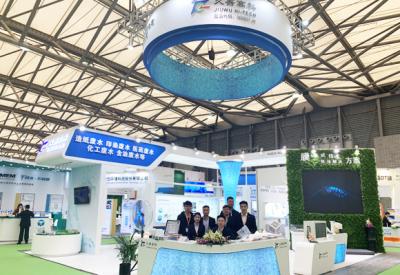Background
Heparin sodium is a mucopolysaccharide sulfate anticoagulant.
Heparin sodium is a sodium salt of acid glucosamine extracted from the intestinal mucosa of pigs or cattle. It is a mucopolysaccharide substance. It treats various diseases complicated by early disseminated intravascular coagulation, and prevents arterial and venous thrombosis and lungs. Suppository, heparin sodium, is currently on the market for crude products ranging from 30,000 to 40,000 per kilogram.
Process of heparin sodium:
Dissolve: Take the fresh pig small intestine and scrape off the surface mucosa by adding water at a ratio of one to four and stir to dissolve it. Adjust the pH to about 8.0 with about 30% sodium hydroxide. Heat in a water bath at 50°C. After standing for 2 hours, remove insoluble impurities.
Enzymatic hydrolysis: Heparin exists in the form of a heparin-protein complex in animals. The protein component of the complex is removed by enzymatic hydrolysis or salt hydrolysis, and heparin is free. A small amount of trypsin is added to the heparin sodium solution to degrade little of protein remaining in heparin into small molecule peptides, which are dissociated from the heparin-protein complex, and the excess protein is removed by adjusting pH value.
Centrifugation: after centrifugation, most of the particulate impurities and grease are removed.
Resin adsorption recovery: adjust the pH to 8.0 when the temperature is 55 degrees, add the processed D204 heparin sodium special resin, stir and absorb for 8 hours, then filter and collect the resin. Rinse the adsorbed resin repeatedly with tap water until the water becomes clear.
Alcohol precipitation and drying: Adjust the pH of the oxidation solution to 6.5, and add the same amount of 95% ethanol for precipitation. The supernatant is drawn out to obtain the precipitate, and the precipitate is slowly added to anhydrous alcohol or acetone for dehydration, the temperature is controlled at 55°C, and the product is vacuum dried for more than 3 hours.
Conclusion:
In view of the problems of separation, purification and concentration of heparin / heparin sodium products, such as purification and concentration of heparin enzymatic hydrolysate, desalination and concentration of high salt and high COD wastewater from casing, etc.
The advantages of membrane separation technology are as follows:
Purification and recovery: Ceramic membrane can completely intercept the protein and other macromolecular substances in the centrifugal supernatant. Traditional separation methods include centrifugal separation, filter press filtration, cloth bag filtration, etc. Due to filtration accuracy and other reasons, there are problems such as lower adsorption efficiency and shorter service life caused by macromolecular impurities entering the subsequent resin process.
Desalination and concentration: Organic membrane can effectively remove sodium chloride and other salts in heparin sodium, and concentrate heparin sodium to replace the traditional "water dilution" process, greatly reducing the amount of resin consumption and supporting tank cost, and reducing sewage discharge.
Wastewater treatment: Membrane integration technology achieves the purpose of waste water recycling and reuse, energy saving .





 +86-25-58849045
+86-25-58849045
 +86-25-58749295
+86-25-58749295
 jiuwu@jiuwu.com
jiuwu@jiuwu.com
 No. 9 Park Road, Pukou District, Nanjing City (Sanqiao Factory)
No. 9 Park Road, Pukou District, Nanjing City (Sanqiao Factory) Call us on:
Call us on:  Email Us:
Email Us:  No. 9 Park Road, Pukou District, Nanjing City (Sanqiao Factory)
No. 9 Park Road, Pukou District, Nanjing City (Sanqiao Factory)

 English
English 한국어
한국어 français
français русский
русский Español
Español

